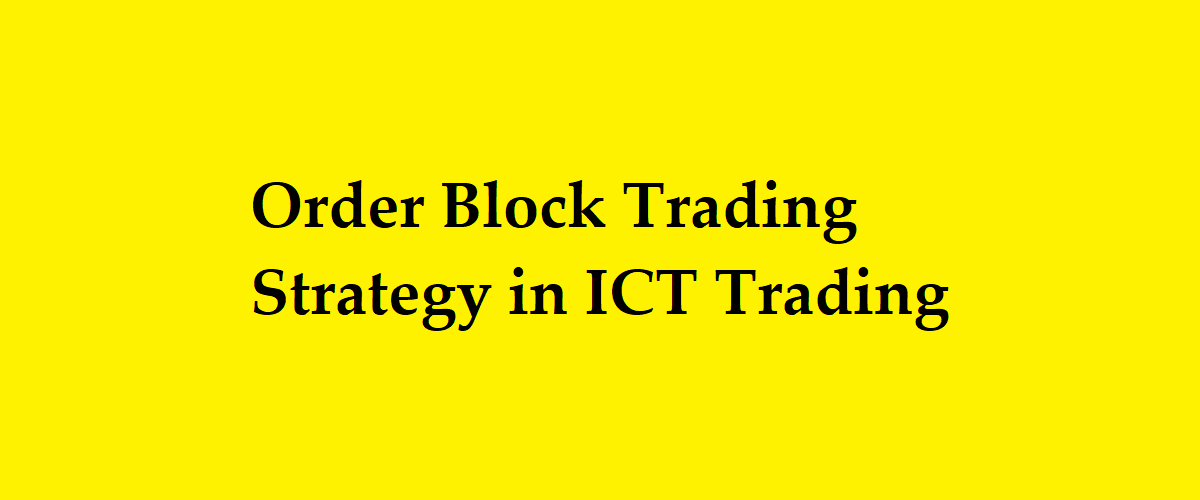Order Blocks are a foundational concept in ICT (Inner Circle Trader) methodology, helping traders identify zones where institutional players place large buy/sell orders. These zones often lead to strong price reactions, making them high-probability trading opportunities.
In this guide, you’ll learn:
- What Order Blocks are and why they work
- How to identify valid Order Blocks on charts
- Step-by-step entry and exit strategies
- Common mistakes to avoid
By the end, you’ll be able to trade Order Blocks like a professional.
What Is an Order Block in ICT Trading?
An Order Block (OB) is a key price zone where institutional traders (banks, hedge funds) have previously executed large orders, leaving an imbalance in the market. When price returns to these zones, it often reacts strongly, providing trading opportunities.
Types of Order Blocks
- Bullish Order Block – A consolidation zone before a strong upward move.
- Bearish Order Block – A consolidation zone before a strong downward move.
Why Do Order Blocks Work?
- Institutional Activity: Big players leave “footprints” where they’ve placed orders.
- Liquidity Pools: Retail traders’ stop losses cluster near these zones.
- Price Memory: Markets tend to revisit and respect these levels.
How to Identify Valid Order Blocks
Step 1: Find a Strong Market Move
- Look for a sharp price surge or drop (indicating institutional participation).
- The move should be clean, not choppy.
Step 2: Locate the Consolidation Before the Move
- The Order Block is the last consolidation before the big move.
- It often appears as a small range of candles before the breakout.
Step 3: Mark the High and Low of the OB
- Bullish OB: The candle range before an uptrend.
- Bearish OB: The candle range before a downtrend.
How to Trade Order Blocks: Step-by-Step Strategy
Entry Rules
- Wait for Price to Retest the OB Zone – Don’t chase; let price come to you.
- Look for Price Rejection Signals – Pin bars, engulfing candles, or FVGs.
- Enter on Confirmation – Only trade if price reacts strongly at the OB.
Stop Loss Placement
- Bullish OB: Below the low of the Order Block.
- Bearish OB: Above the high of the Order Block.
Take Profit Targets
- TP1: Nearest swing high/low (initial take-profit).
- TP2: Next major liquidity pool or imbalance zone.
Order Block vs. Other ICT Concepts
| Concept | Order Block | Breaker Block | Fair Value Gap (FVG) |
|---|---|---|---|
| Definition | Institutional order zone | Fake breakout reversal | Price imbalance |
| Usage | Reversal/Continuation | Reversal only | Continuation clue |
Common Mistakes to Avoid
❌ Trading Every OB – Only trade OBs in line with the trend.
❌ Ignoring Confirmation – Wait for price rejection before entering.
❌ Poor Risk Management – Never risk more than 1-2% per trade.
FAQ: Order Block Trading Strategy
1. Which timeframes are best for Order Blocks?
- Best: 1H, 4H, Daily (higher timeframes have stronger signals).
2. Can Order Blocks work in crypto trading?
- Yes! They work in any liquid market (forex, stocks, crypto).
3. How accurate is the Order Block strategy?
- No strategy is 100% accurate, but with proper confirmation, it has a high win rate.
4. Should I combine Order Blocks with other ICT concepts?
- Yes! Use with Liquidity Pools, FVGs, and Market Structure Shifts for stronger setups.
Conclusion: Mastering Order Block Trading
Order Blocks are one of the most powerful concepts in ICT trading, helping traders spot institutional order flow and trade with the “smart money.” By waiting for price to retest these zones and confirming with rejection signals, you can enter high-probability trades with strong risk-reward ratios.

1 thought on “Order Block Trading Strategy in ICT Trading”